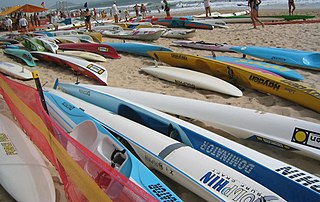
Surf lifesaving is a multifaceted social movement that comprises key aspects of voluntary lifeguard services and competitive surf sport. Originating in early 20th century Australia, the movement has expanded globally to other countries, including New Zealand, Ireland, South Africa, and the United Kingdom. Surf lifesavers in Australia are colloquially known as "Clubbies".
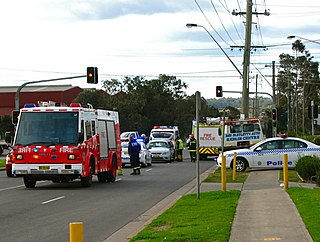
Emergency services and rescue services are organizations that ensure public safety, security, and health by addressing and resolving different emergencies. Some of these agencies exist solely for addressing certain types of emergencies, while others deal with ad hoc emergencies as part of their normal responsibilities. Many of these agencies engage in community awareness and prevention programs to help the public avoid, detect, and report emergencies effectively. Emergency services are often considered first responders, and typically have dedicated emergency vehicles.

Mountain rescue refers to search and rescue activities that occur in a mountainous environment, although the term is sometimes also used to apply to search and rescue in other wilderness environments. This tends to include mountains with technical rope access issues, snow, avalanches, ice, crevasses, glaciers, alpine environments and high altitudes. The difficult and remote nature of the terrain in which mountain rescue often occurs has resulted in the development of a number of specific pieces of equipment and techniques. Helicopters are often used to quickly extract casualties, and search dogs may be deployed to find a casualty.
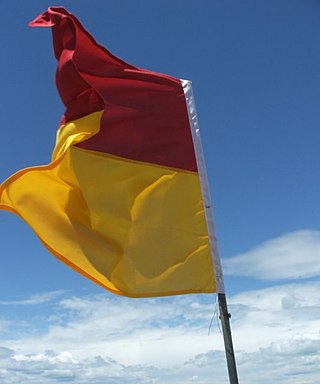
A lifeguard is a rescuer who supervises the safety and rescue of swimmers, surfers, and other water sports participants such as in a swimming pool, water park, beach, spa, river and lake. Lifeguards are trained in swimming and CPR/AED first aid, certified in water rescue using a variety of aids and equipment depending on requirements of their particular venue. In some areas, lifeguards are part of the emergency services system to incidents and in some communities, lifeguards may function as the primary EMS provider.

Ski mountaineering is a skiing discipline that involves climbing mountains either on skis or carrying them, depending on the steepness of the ascent, and then descending on skis. There are two major categories of equipment used, free-heel Telemark skis and skis based on Alpine skis, where the heel is free for ascents, but is fixed during descent. The discipline may be practiced recreationally or as a competitive sport.

A certified first responder is a person who has completed a course and received certification in providing pre-hospital care for medical emergencies. Certified individuals should have received much more instruction than someone who is trained in basic first aid and cardiopulmonary resuscitation (CPR) but they are not necessarily a substitute for more advanced emergency medical care rendered by emergency medical technicians and paramedics. First responders typically provide advanced first aid level care, CPR, and automated external defibrillator (AED) usage. The term "certified first responder" is not to be confused with "first responder", which is a generic term referring to the first medically trained responder to arrive on scene and medically trained telecommunication operators who provide pre-arrival medical instructions as trained Emergency Medical Dispatchers (EMD). Many police officers and firefighters are required to receive training as certified first responders. Advanced medical care is typically provided by EMS, although some police officers and firefighters also train to become emergency medical technicians or paramedics.
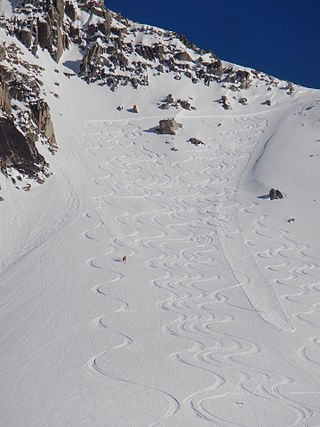
Backcountry skiing (US), also called off-piste (Europe), alpine touring, freeriding or out-of-area, is skiing in the backcountry on unmarked or unpatrolled areas either inside or outside a ski resort's boundaries. This contrasts with alpine skiing, which is typically done on groomed trails benefiting from a ski patrol. Unlike ski touring, backcountry skiing can - and often does - include the use of ski lifts including snowcats and helicopters. Recent improvements in equipment have increased the popularity of the sport. As the sport does confront the individual practicing it with the dangers of natural, unprepared alpine terrain like avalanches, it is generally recommended to carry standard safety equipment and to learn beforehand how to behave safely under such conditions.

The nonprofit National Ski Patrol (NSP) is the largest winter education organization in the world. The NSP provides education, outreach, and credentialing related to outdoor recreation and safety. It is currently composed of more than 31,000 members who serve in over 650 patrols. NSP members, both volunteer and paid, ensure the safety of outdoor recreation enthusiasts in ski areas throughout the United States of America and certain military areas of Europe. For its dedication to the promotion of public safety in skiing and other winter sports, the group was granted a congressional charter under Title 36 of the United States Code in 1980.
Outdoor emergency care (OEC) was first developed by the National Ski Patrol in the 1980s for certification in first aid, and other pre-hospital care and treatment for possible injuries in non-urban settings. Outdoor emergency care technicians provide care at ski resorts, wilderness settings, white-water excursions, mountain bike events, and in many other outdoor environments.
The Canadian Ski Patrol is a national, non-profit, registered charitable organization that is volunteer-based and provides advanced first aid and emergency response services at more than 230 ski resorts and Nordic centres, as well as hundreds of recreational and sporting events across Canada. The Canadian Ski Patrol (CSP) has more than 4,500 registered members consisting of alpine and Nordic skiers, snowboarders, and non-skiers/boarders, making it the largest volunteer-based certified first responder organization in Canada. Members of the CSP are involved in accident prevention and intervention, managerial activities, and patroller and public education.
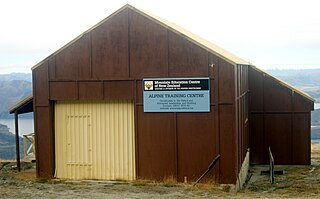
The Mountain Education Centre of New Zealand (MECNZ) was formally a division of Tai Poutini Polytechnic, located in Wānaka, New Zealand. Tai Poutini Polytechnic continues to run the Ski Patrol Programme from its Wānaka Campus.

Wilderness medicine is defined by difficult patient access, limited equipment, and environmental extremes. Today, wilderness or expedition medicine is practiced by Wilderness First Responders, Wilderness EMTs, Remote/Offshore/Wilderness Paramedics and Physicians on expeditions, in outdoor education, search and rescue, mountain rescue, remote area operations including research, exploration, and offshore oil platforms, as well as tactical environments. In mainland Europe, where mountain rescue is done by paid professionals, there are courses for physicians that help qualify them to be mountain rescue or expedition doctors. Many of these courses lead to an International Diploma in Mountain Medicine, which is recognized by the Union Internationale des Associations Alpinistes.

A ski helmet is a helmet specifically designed and constructed for winter sports. Use was rare until about 2000, but by about 2010 the majority of skiers and snowboarders in the US and Europe wore helmets. Helmets are available in many styles and typically consist of a hard plastic/resin shell with inner padding. Modern ski helmets may include many additional features, such as vents, earmuffs, headphones, goggle mounts, and camera mounts.
Divers Alert Network (DAN) is a group of not-for-profit organizations dedicated to improving diving safety for all divers. It was founded in Durham, North Carolina, United States, in 1980 at Duke University providing 24/7 telephonic hot-line diving medical assistance. Since then the organization has expanded globally and now has independent regional organizations in North America, Europe, Japan, Asia-Pacific and Southern Africa.
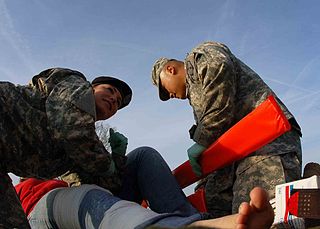
Emergency medical responders are people who are specially trained to provide out-of-hospital care in medical emergencies. There are many different types of emergency medical responders, each with different levels of training, ranging from first aid and basic life support. Emergency medical have clinical experience or clinical skills of emergency medical services (EMS) personnel. The EMR program is not intended to replace the roles of emergency medical technicians or paramedics and their wide range of specialties. Emergency medical responders typically assist providing basic life support. "Emergency medical responder" is a broad term, used either to describe a certain EMS certification level, or generally to describe those who respond to medical emergencies. Specifically used, an Emergency Medical Responder is an EMS certification level used to describe a level of EMS provider below that of an emergency medical technician and paramedic. Broadly used, a first responder is the first medically trained personnel who comes in contact with a patient. This could be a passerby, citizen volunteer, or fire department, police, or emergency medical services personnel.
A wilderness medical emergency is a medical emergency that takes place in a wilderness or remote setting affinitive care. Such an emergency can require specialized skills, treatment techniques, and knowledge in order to manage the patient for an extended period of time before and during evacuation.

The Mountain Rescue Service of the Czech republic provides nationwide mountain rescue operations and search and rescue operations in difficult terrains in close cooperations with the Air Rescue Service and Police of the Czech Republic. It is a part of the integrated rescue system in the Czech Republic.

A rescue toboggan, also known as a rescue sled or emergency rescue sledge, or by the Finnish word ahkio, is a carrier for transporting a person or goods on snowy or icy surfaces. It is used by mountain rescue or ski patrol teams to evacuate an injured skier or snowboarder. There are related designs for use on water to carry accident victims or emergency equipment.
Roland Palmedo was a pioneering developer of recreational skiing in the United States. He founded the Mount Mansfield Lift Company which built Stowe's first chairlift, and created the Mad River Glen ski area. Roland Palmedo was also instrumental in the establishment of the National Ski Patrol and the first women's U.S. Olympic ski team. As founding president of the Amateur Ski Club of New York, Palmedo promoted skiing as an outdoor adventure for families and competitive racers alike.

ISO 7010 is an International Organization for Standardization technical standard for graphical hazard symbols on hazard and safety signs, including those indicating emergency exits. It uses colours and principles set out in ISO 3864 for these symbols, and is intended to provide "safety information that relies as little as possible on the use of words to achieve understanding."
















